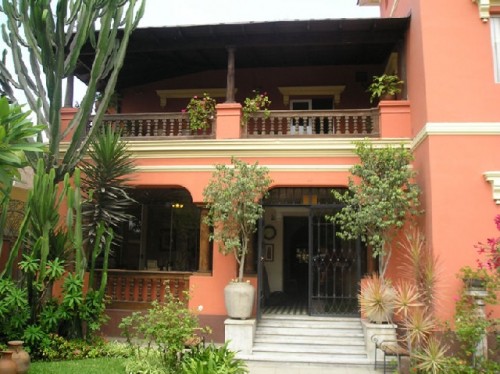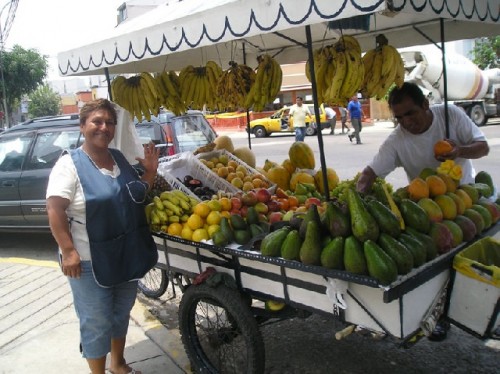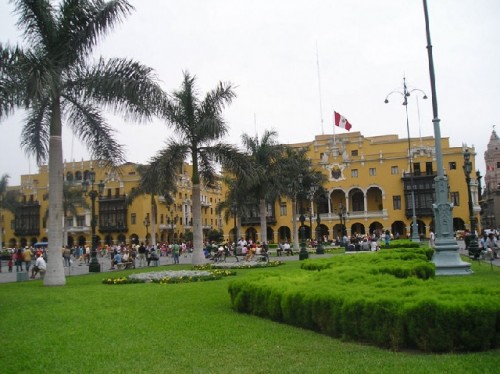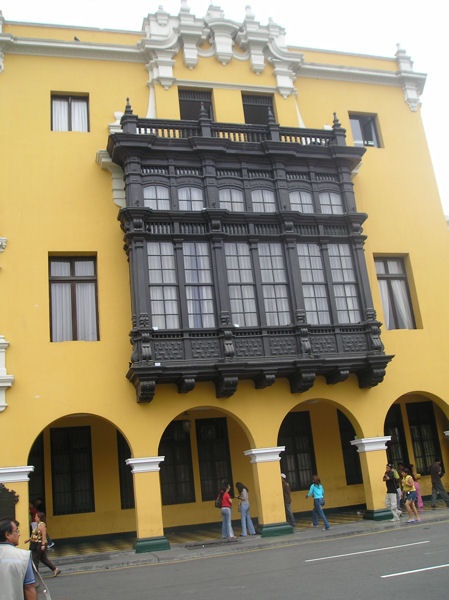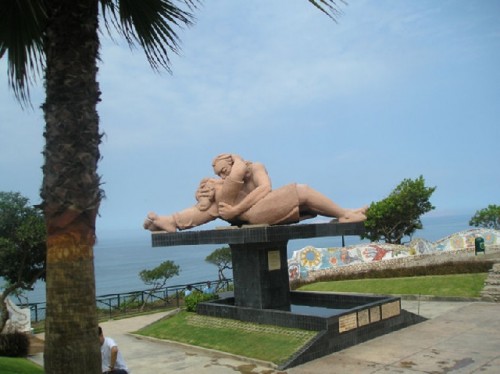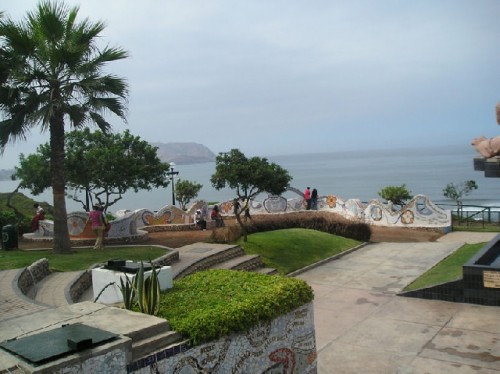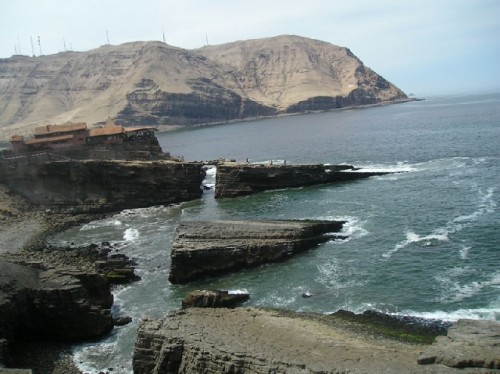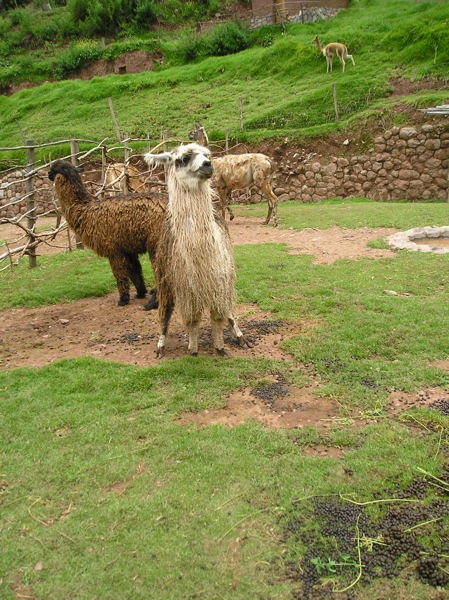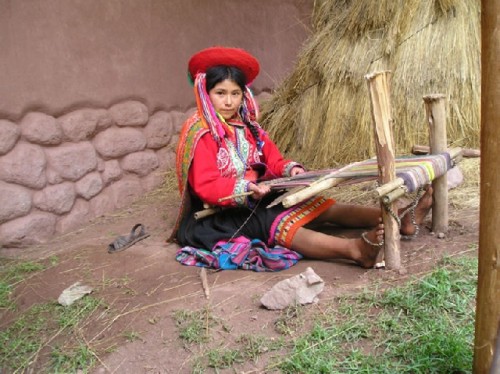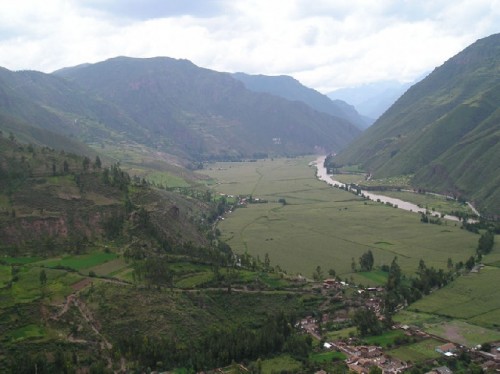Peru: Part One
Lima to Sacred Valley
By: Zeren Earls - Sep 11, 2007
Peru: Part One
The momentous occasion of turning 70 prompted me to go to Peru. Machu Picchu, the ancient Incan site high in the mountains, beckoned as the place for a unique celebration. My friend Sumru accompanied me on the trip with Overseas Adventure Travel, which specializes in small group tours. Since this was my fifth trip with OAT I knew we were in for great discovery. The two week trip (February 12-26, 2007), which cost under $3000, included airfare, lodging and meals.
Lima
My flight from Boston to Atlanta beat a predicted snowstorm by a day. Relieved to have made a smooth connection to Lima, I settled for my seven-hour flight with the Discovery Channel's Insight Guide to Peru. The arresting pictures in the Guide quickly transported me to Peru, 12 degrees south of the equator, where it was now summer. We landed in Lima past midnight. Despite the excitement of arrival, I was ready for bed. Since Lima shares the same time zone with Boston, I looked forward to a goodnight's sleep.
Early in the morning I explored the hotel's premises. It felt good to be in short sleeves and sandals. The rooms of the lovely colonial building faced a sun-splashed courtyard. The building sat back from the street in a garden of lush foliage with decorative earthenware pots that added to its charm. Antigua Miraflores, named after its fashionable neighborhood, was our home for three nights.
Five of the fourteen in our group were already in Lima; the rest were to arrive from the pre-trip extension to the Amazon rain forest late that evening. Since I had been to the rain forest in Argentina, I opted out of this extension. We met with our trip leader, Walter Torres, for a briefing. A handsome mestizo of native and Spanish heritage, he explained his English first name as a fashion of the time when he was born. He gave us basic facts: A country with a population of 27 million, Peru is three times the size of California. 10% is coastland, 40% highlands and the remaining 50% jungle. The Sierras, which run from north to south, separate the coast from the high plateau, where majority of people live.
We went out for a stroll. Every block of the main street in Miraflores seemed to be populated with moneychangers. Business was brisk, as these men offered a better exchange rate than the banks. They examined each dollar to avoid counterfeit money and rejected bills that looked worn. We strolled on, admiring African tulip trees with bright orange flowers. Their bulbs stored water, which jetted out like water pistols to compensate for the dry heat. Lima, 80 meters above sea level, has a desert climate. We stopped by a vendor's cart stacked with gigantic avocados and mangoes. Walter introduced us to chirimoya (custard apple). It was delicious.
Lunch was at an outdoor restaurant, where we enjoyed steamed vegetables, sea bass with potatoes and mango custard. Given the choice between fish and meat, I often opted for fish. Of the world's 6000 varieties of potatoes 4000 grow in Peru. They accompany every meal and are used in every dish, including pasta. They come in every size and color such as black, purple, yellow etc.
The city tour began with a drive through the upper middle class neighborhood of San Isidro. We passed by embassies and plentiful casinos, including one with the Statue of Liberty as a signpost. Walter pointed out the soccer stadium, bastion of an institution equally important as the Catholic Church throughout Peru. As we continued on to the old part of the city, the scenery changed from leafy suburbs to beautiful colonial houses in decay. Many had "for rent" signs for as little as $60 a month. As the city has swelled with rural immigrants to a population of eight million, hotels and businesses have taken flight to better-run districts. The Plaza Mayor, the colonial heart of the city, has been declared a cultural heritage site by UNESCO, which is restoring the vibrancy of the handsome square with a 17th-century bronze fountain in the middle. The buildings facing the plaza have been painted yellow-ochre, the color used in the colonial period.
The Cathedral dominates the eastern side of the square; next-door is the Archbishop's Palace with an impressive wooden balcony; opposite stands City Hall; and police in tanks guard the Government Palace on the northern side. Nearby, the Monastery of San Francisco faces a small paved square full of pigeons and vendors of votive offerings. The interior of this jewel of colonial Lima is decorated in the geometrical Andalusian Moorish style. Its carved wood and plaster ceiling, Spanish tiles and religious paintings are outstanding. The building's four levels of catacombs, which were used as Lima's cemetery until 1810, contain hundreds of skulls and bones stored according to type. The National Museum of Anthropology and Archeology at Bolivar Square has a superb collection of pottery and textiles from all main cultures of ancient Peru: Chavin, Moche, Chimu, Tiahuanaco, Pucara, Paracas, Nazca and Inca. They are laid out chronologically.
Our day ended with dinner and a folklore show. The buffet included both toasted and steamed giant corn kernels as appetizers and the most famous Peruvian dish, ceviche - raw fish marinated in lime juice and hot peppers - and accompanied by cold sweet potatoes. The folk dances showcased the wealth of their origins; Castilian percussive footwork, African curved hip movements, and the acrobatic agility of natives in multicolored costumes were all enjoyable. At the end the dancers recruited some of us to join them.
The next morning the full group met with Walter for another briefing. He introduced himself as a native of Cusco, where he studied history at university. He spoke Castilian and Quechua, both official languages of Peru. We sampled the national drink, pisco sour, which consists of grape brandy, lime, egg white, sugar syrup and bitters - refreshing. Later the visit to Larco Park was unique. Known as the Lover's Park, it has a larger than life size sculpture of a reclining couple kissing. A site for communal weddings, people were practicing for the kissing competition to be held later, as this was Valentine's Day.
Lima has forty-three neighborhoods. The traditional houses painted in deep ochre, blue, orange, yellow and pistachio dot the landscape. They have flat rooftops, which are used for domestic animals, storage, water depots and drying laundry. Barbed wire over walls of gardens bursting with African tulips and jacarandas are vestiges of the terrorist period. 52% of people in Peru live below the poverty line; seven in ten live in shantytowns.
Villa El Salvador is a collection of shantytowns with a population of 800,000, making it the largest in the world. Started in 1971 by squatters running from the terrors of the Shining Path in the mountains, it was recognized by the government in 1983 as an official neighborhood. We visited Santa Rosa, a community of three hundred families, and were met by its president, who gave us a tour. Elected for two years, this thirty-one-year- old woman was the mother of two and expecting a third. Three families for ten days take turns with kitchen responsibilities in return for free food for a family of five. The communal kitchen provides soup and main dish for the residents, who pay around 75 cents. Every two days the water truck comes by ringing a bell to signal it is time to replenish. These people, who work as taxi drivers, shoeshine boys etc, have created a functioning society, which even has its own penal rules. With government help they now have health clinics and schools that offer two shifts, 8am-1pm and 1-6pm. There are 52 children per class. Admiring human resilience and initiative we left the staples we had brought such as pasta, vegetable oil, soap and shampoo and thanked the president for the hospitality.
The visit to the city's bustling fish market provided great insight. Stalls were packed with varieties of seaweed, caviar, fish, clams, mussels, crabs and shrimp. While the vendors did not keep their products cold during the day, they shared a refrigerated area for overnight storage. After mining, fishing is Peru's second major industry. Peruvians derive income from seven million tons of anchovies annually. The prickly pear Walter treated us to on the way out was the sweetest I have tasted.
In the afternoon the pace of life slowed down for siesta. Some shops closed till 4:30 pm. Taking advantage of our free time, Sumru and I visited Kuntur Huasi, a gallery for folk arts and crafts in Miraflores that a Peruvian friend in the States had recommended. Here one of the items I purchased was a colorful retablo from Ayacucho known for the craft. A retablo is a decorated wooden box depicting scenes of folk life and overflowing with clay or plaster figures. The latter are mixed with boiled potato to keep them pliable. My retablo is of the corn harvest. Our hotel gift shop was an outlet for Fair Trade Products made in Peru. The purchases support women's cooperatives that encourage traditional crafts. I purchased a cotton bag depicting hand painted geometric designs of the Shipibo Tribe living in the eastern jungle. My other purchase was a colorful sweater made from naturally dyed alpaca wool. I justified the cost of these both for their unique design and quality, and for the direct income the women's cooperatives derive from them.
On the way to dinner we stopped by the Lovers' Park. Packed with kissing couples, it was an incredible scene. The Costa Verde restaurant hosted our welcome dinner. All the tables were decked with red balloons for Valentine's Day. In addition our table had an American flag. The first course, tiny scallops topped with Parmesan cheese and baked in their shell, was sensational. Sea bass with vegetables followed. Crepes with ice cream and fresh fruit ended an elegant meal.
Early in the morning we flew from Lima into the high Andes and landed in Cusco at 11,000 feet. To ease our transition to the high altitude, we drove to Sacred Valley, where we spent two nights before returning to Cusco. However, we had to climb up to an elevation of 12,200 feet, and then began descending to the Valley. We passed mud brick houses, their roofs adorned with two ceramic bulls flanking a cross. Received as a gift upon building a new house, the bulls symbolize prosperity. Using ancient agricultural terraces, locals grow beans, grains, potatoes and other Andean tubers as the Incans did. We stopped to snack on tamales wrapped in corn husks and took pictures of grazing llamas. Of the four types of cameloids, the domestic llama is distinguished by its long neck. The others are the domestic alpaca, and the wild guanaco and vicuna.
The ancient Inca city of Pisac was our lunch stop. Andean musicians played while we enjoyed quinoa soup enriched with peanut shaped potatoes, grilled fish and fruit salad. The climb to the top of the old city provided a sweeping view of the terraced mountainside. The stillness of the place and clarity of the air were unforgettable. We also visited mountain cave tombs, where bodies were buried in fetal position to ensure rebirth. Our long day ended upon arrival at the San Augustin Urubamba Hotel in Sacred Valley.

